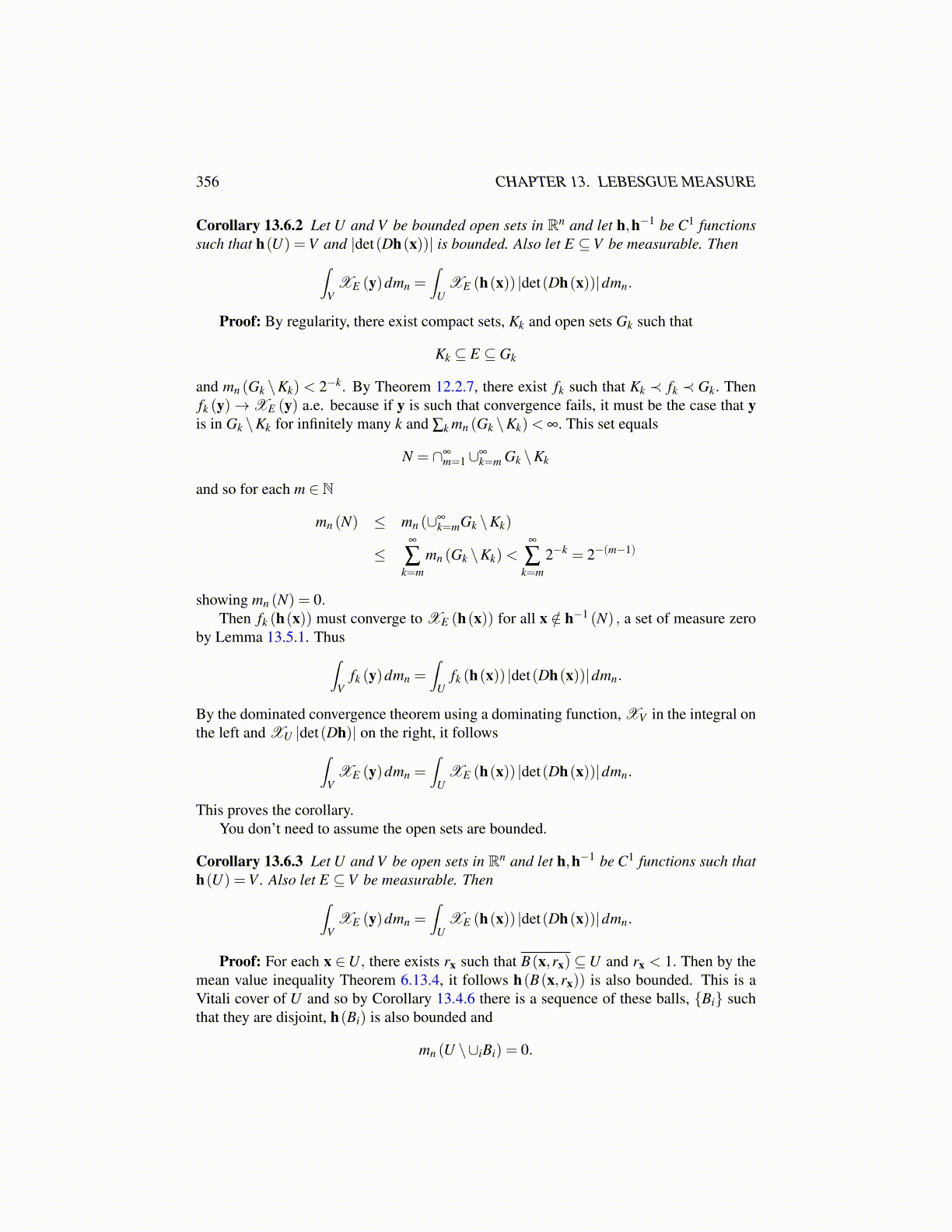
356 CHAPTER 13. LEBESGUE MEASURE
Corollary 13.6.2 Let U and V be bounded open sets in Rn and let h,h−1 be C1 functionssuch that h(U) =V and |det(Dh(x))| is bounded. Also let E ⊆V be measurable. Then∫
VXE (y)dmn =
∫U
XE (h(x)) |det(Dh(x))|dmn.
Proof: By regularity, there exist compact sets, Kk and open sets Gk such that
Kk ⊆ E ⊆ Gk
and mn (Gk \Kk) < 2−k. By Theorem 12.2.7, there exist fk such that Kk ≺ fk ≺ Gk. Thenfk (y)→XE (y) a.e. because if y is such that convergence fails, it must be the case that yis in Gk \Kk for infinitely many k and ∑k mn (Gk \Kk)< ∞. This set equals
N = ∩∞m=1∪∞
k=m Gk \Kk
and so for each m ∈ N
mn (N) ≤ mn (∪∞k=mGk \Kk)
≤∞
∑k=m
mn (Gk \Kk)<∞
∑k=m
2−k = 2−(m−1)
showing mn (N) = 0.Then fk (h(x)) must converge to XE (h(x)) for all x /∈ h−1 (N) , a set of measure zero
by Lemma 13.5.1. Thus∫V
fk (y)dmn =∫
Ufk (h(x)) |det(Dh(x))|dmn.
By the dominated convergence theorem using a dominating function, XV in the integral onthe left and XU |det(Dh)| on the right, it follows∫
VXE (y)dmn =
∫U
XE (h(x)) |det(Dh(x))|dmn.
This proves the corollary.You don’t need to assume the open sets are bounded.
Corollary 13.6.3 Let U and V be open sets in Rn and let h,h−1 be C1 functions such thath(U) =V . Also let E ⊆V be measurable. Then∫
VXE (y)dmn =
∫U
XE (h(x)) |det(Dh(x))|dmn.
Proof: For each x ∈U, there exists rx such that B(x,rx) ⊆U and rx < 1. Then by themean value inequality Theorem 6.13.4, it follows h(B(x,rx)) is also bounded. This is aVitali cover of U and so by Corollary 13.4.6 there is a sequence of these balls, {Bi} suchthat they are disjoint, h(Bi) is also bounded and
mn (U \∪iBi) = 0.